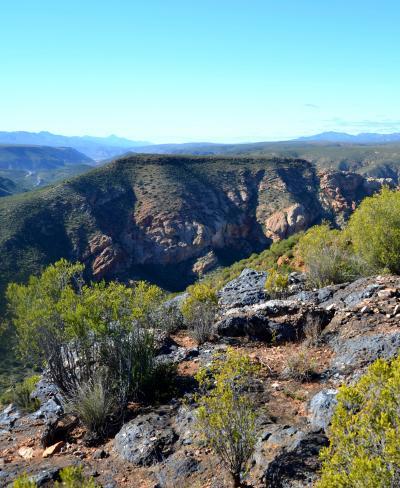Boulder, Colorado, USA – In the September issue of GSA Today, Paul Bierman of the University of Vermont–Burlington and colleagues present a cosmogenic view of erosion, relief generation, and the age of faulting in southernmost Africa. By measuring beryllium-10 (10Be) in river sediment samples, they show that south-central South Africa is eroding at the slow rate of about five meters per million years, consistent with rates in other non-tectonically active regions.
By measuring 10Be and aluminum-26 (26Al) in exposed quartzites, Bierman and colleagues find that undeformed upland surfaces have changed little since the Pliocene, with minimum exposure ages averaging 1.3 million years and maximum erosion rates averaging 0.34 meters per million years, and no Quaternary movement on faults that displace the quartzite but not the silcrete-mantled pediment surfaces.

Iron-rich silcrete mantles beveled quartzite in south-central South Africa. Deep valleys dissect the landscape and steep hillslopes separate the valley bottoms from the flat, gently sloping pediments.
(Photo Credit: Paul Bierman and GSA Today.)
10Be measurements in exposed fault scarp samples from the only recognized Quaternary-active fault are consistent with 1.5 m of displacement occurring at 25,000 years ago. They conclude that rates of landscape change on the upland pediment surfaces are an order of magnitude lower than basin-average erosion rates and that, as isostatic response to regional denudation uplifts the entire landscape at several meters per million years, valleys deepen, isolating stable upland surfaces and creating the spectacular relief for which the region is famous.
Source: Geological Society of America